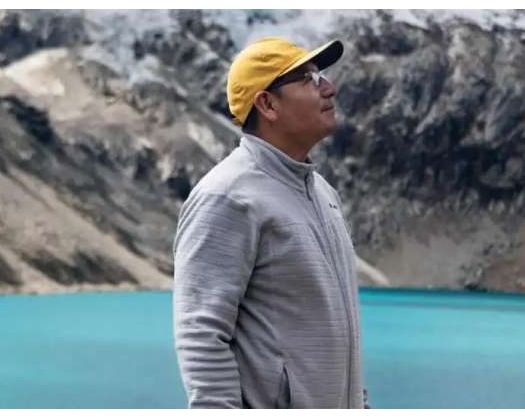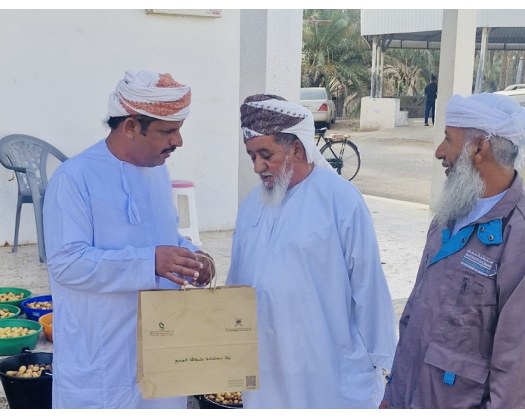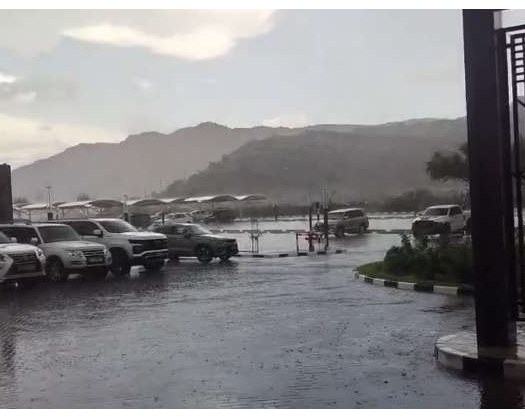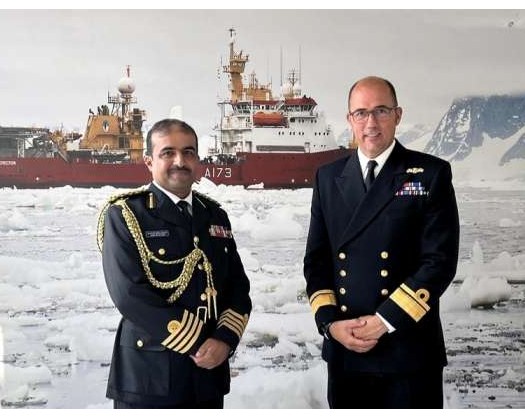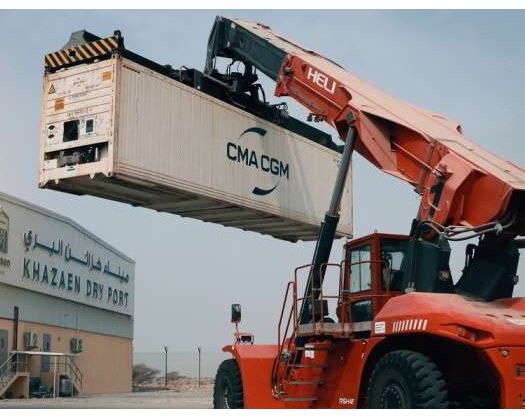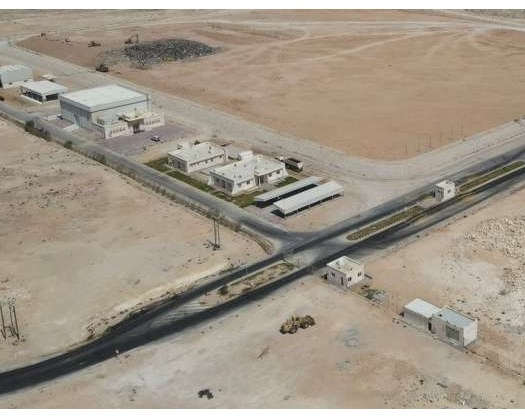In the summer months, Saul Luciano Lliuya cultivates corn, potatoes, and quinoa, while in winter, he guides tourists to the frigid peaks of the Peruvian Andes.
Currently, the farmer from the mountain village of Huaraz is gaining international attention. A trial is underway at the higher regional court in Hamm, a city in northwestern Germany, involving Lliuya and the German energy firm RWE.
"I'm feeling a mix of excitement and concern," Lliuya shared with DW. This marks his third journey from Peru to Germany for the climate lawsuit.
Nine years ago, with the support of non-governmental organizations, he initiated legal action against the energy company, making significant legal history.
Lliuya contended that climate change posed a risk to his home due to potential flooding from a glacial lake situated above his village. He accused RWE, a prominent emitter of greenhouse gases, of exacerbating this risk through its harmful emissions. He argued that the company should be held accountable and contribute to the costs associated with safeguarding his home and community.
RWE, however, denies any responsibility.
In the upcoming hearings, the court will determine whether Lliuya's home is genuinely at risk of flooding and, if so, to what extent RWE can be held liable.
Lliuya's initial lawsuit against the company was dismissed in 2015, but an appeal was accepted by the higher regional court two years later.
"I carry a significant sense of responsibility," Lliuya stated. For him, this case represents a battle against climate change and glacial melting, as well as a quest to hold accountable those responsible for the damage.
RWE stated to DW that if such a claim were recognized under German law, it would imply that every car driver could also be held accountable. The company deems this perspective legally untenable and misguided from a socio-political standpoint.
The multinational corporation, based in Essen, Germany, emphasizes its adherence to national legal standards and clarifies that it does not operate in Peru.
The threat of flooding poses a risk to thousands. Lliuya's residence, along with the Andean community of Huaraz, is situated in a valley beneath a glacial lake that is progressively rising due to ice melt. An international study conducted by researchers from Switzerland and the USA revealed that the water levels in the lake surged 34 times between 1990 and 2010.
The plaintiffs argue that rising temperatures and the thawing of permafrost heighten the likelihood of ice or rock fragments detaching from the 2,000-meter (6,560 feet) high rock face and falling into the lake. They warn that flooding resulting from this could have severe repercussions for Lliuya’s home and approximately 50,000 residents in the surrounding area.
In 1941, an avalanche triggered a catastrophic flood in Huaraz, resulting in the deaths of around 1,800 individuals.
Recently, Lliuya reported that an avalanche of debris has filled the lake to its capacity.
A 2021 study published in the British journal Nature concluded that the glacier's melting near Huaraz cannot be attributed to anything other than climate change, as the glacier has been retreating consistently for over 36 years.
What level of accountability should major polluters assume? This case fundamentally revolves around the principle that the polluter should bear the costs, according to attorney Roda Verheyen, who represents Lliuya. "There is an entity that engages in activities—whether allowed or not—that result in extraordinarily severe and unacceptable outcomes, particularly in relation to climate change."
A 2014 report by Greenpeace and the environmental law organization Climate Justice Programme indicates that RWE has been responsible for approximately 0.47% of emissions contributing to climate change since the onset of industrialization.
Consequently, Lliuya is urging the company to finance a proportional share of protective measures. These measures include the installation of drainage systems to manage meltwater from the glacier lagoon and the expansion of the dam. Verheyen emphasizes that Lliuya is not seeking personal financial gain; rather, he wants RWE to contribute to the costs associated with these protective initiatives.
Simulations conducted in 2016 demonstrated that lowering the water level could significantly mitigate risks to the community, even in the event of substantial rockfalls or avalanches.
While RWE acknowledges its status as one of Europe's largest CO2 emitters, it asserts that it has consistently complied with legal emission limits. "Furthermore, since 2005, our facilities have been governed by the European Emissions Trading Scheme, which mandates that we pay for every ton of CO2 emitted," the company stated.
In 2023, the court commissioned an expert assessment during a site visit in Peru to evaluate the potential impact of severe flooding on Lliuya's residence.
Why is a climate lawsuit from Peru being addressed in Germany? The plaintiffs are utilizing a neighborhood clause, which can require highway operators to implement noise barriers due to disturbances faced by local residents.
"We are facing a source of danger that could potentially claim thousands of lives, yet we lack both hazard and risk prevention measures. This is the core issue we are confronting in the Andes," Verheyen stated in an interview with DW.
In a previous ruling regarding the RWE case, the court determined that the global impacts of climate change create a form of international neighborhood relationship, even when the harm occurs far from the source of pollution.
RWE represents just one of many contributors to pollution, but as Verheyen noted, "you have to start somewhere."
"If the court supports the claim, it will send a strong message to other significant emitters," remarked Petra Minnerop, a professor of international law at Durham University. She emphasized that although the case is being heard in Germany, it could establish a significant international precedent.
RWE contends that it is not legally feasible to link the consequences of climate change to a single emitter.
Increasing Global Climate Litigation
Since the commencement of initial legal actions in 2015, cross-border climate litigation has emerged in various nations.
In the Netherlands, Shell, a major oil and gas corporation, faced legal challenges until recently. Non-governmental organizations sought the right to "protection from climate change," but their efforts to compel the company to significantly reduce its emissions were ultimately unsuccessful.
In France, TotalEnergies, a leading fossil fuel company, was sued for failing to align its operations with the Paris Climate Agreement.
Minnerop argues that addressing climate risk responsibilities solely at the national level is insufficient for long-term solutions.
"Achieving climate justice requires us to treat it as a critical issue within the framework of international law and to prioritize it based on scientific evidence," she stated.
Lluiya expresses concern that if he loses his case, he and his community may lack adequate flood protection. He notes that while Peruvian authorities have proposed a dyke, its construction remains uncertain, and financial support from RWE, along with international focus, could be beneficial.
Should he prevail, Lluiya anticipates a moment of joy, as it would represent "advancement in the legal arena," though he acknowledges it will not "prevent the glaciers from melting."
A court decision on whether to proceed with the case may be announced as early as this week.

